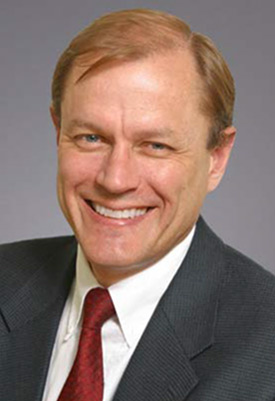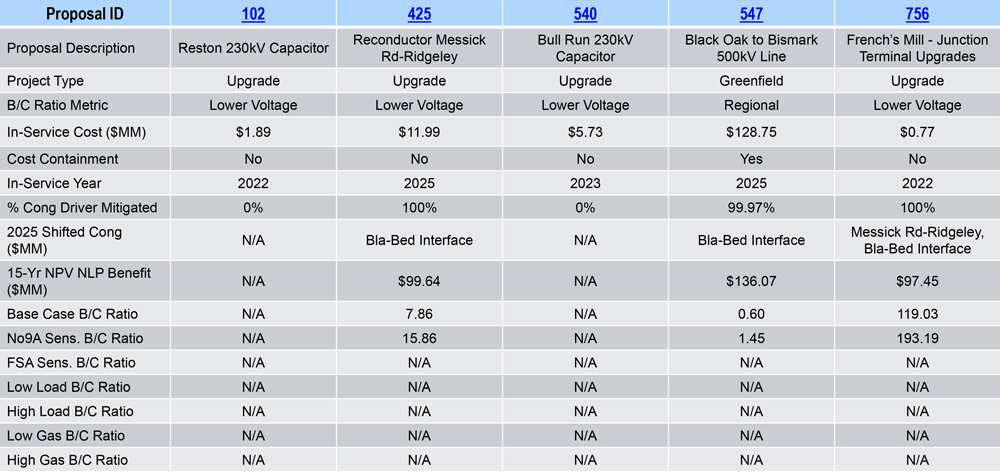
 Steve Huntoon | Steve Huntoon
Steve Huntoon | Steve Huntoon
As the story goes, Shoeless Joe Jackson was leaving the Cook County Courthouse in 1920 amid the Black Sox scandal when a kid yelled, “Say it ain’t so, Joe!” [1]
I felt like that kid when I read that FERC proposes to wipe out competition in transmission.[2]
What’s the public policy case for this? The oft-repeated claim that transmission competition isn’t working. I call this truth by repetition.[3]
The reality, as I pointed out five years ago,[4] is that transmission competition works great — when and where it’s allowed to work. The problem is that it’s been hobbled since its advent in FERC Order 1000. As Professor Paul Joskow concludes: “The progress has been slow but promising.”[5]
Transmission Competition Works
Let me give you an example of how transmission competition works. PJM biennially identifies highly congested facilities and has a competitive solicitation for solutions. The table below shows the most recent PJM evaluation of proposed solutions to one source of congestion.[6]
 PJM selected Proposal 756, which called for spending $770,000 on terminal equipment upgrades at the French’s Mill and Junction 138-kV substations, to improve market efficiency in the APS zone. Proposal 547, a new 500-kV line found to be slightly less effective, would have cost more than $136 million. | PJM
PJM selected Proposal 756, which called for spending $770,000 on terminal equipment upgrades at the French’s Mill and Junction 138-kV substations, to improve market efficiency in the APS zone. Proposal 547, a new 500-kV line found to be slightly less effective, would have cost more than $136 million. | PJM
Proposal 756 above is 100% effective at mitigating congestion and costs $770,000; Proposal 547 is 99.97% effective and costs $136,070,000. Which should consumers have to pay for?
Here’s the rub: Absent a transparent, competitive process, how would anyone know about the $770,000 solution? And no one being the wiser, if the notice of proposed rulemaking is correct that adding rate base is what incents transmission owners,[7] why wouldn’t a TO want the $136,070,000 solution?
Please note that consumers are not well protected by regulatory oversight. As Joskow observes: “FERC does not have a well-developed process to scrutinize the costs presented to it for inclusion in the transmission owners’ revenue requirements or a history of disallowing unreasonable costs.”[8]
Even when the competition is not in solutions, but simply in procurement of the same basic project, national and international experience suggests cost savings in the 20 to 30% range.[9] And this is capital cost savings, which does not include the additional savings from a lower cost, competitive capital structure for determining the annual revenue requirement.
Exceptions to Competition: NOPR Misdiagnosis and Misdirection
The NOPR says the problem with competition is that TOs are motivated to avoid it through exceptions, which leads to smaller, less expensive solutions.[10] As I said in my last column,[11] that can be a good thing! Why build large greenfield transmission lines when a simple upgrade relieves the problem (like the PJM example in the prior section)?
If there really is a problem with an incentive for less expensive solutions because of exceptions, the right answer is to minimize the exceptions. Not go the other way and eliminate competition!
The NOPR’s Substitute is Escher Stairs Leading to Synthetic Monopoly
Finally, a few words about the NOPR’s proposed substitute for competition: Requiring some sort of joint ownership of a given project. For anyone concerned about delays in getting new transmission built, please read NOPR paragraphs 358-382, and contemplate the endless squabbling and litigation that this concept portends. The possibilities are endless!
As for the NOPR notion that joint ownership could somehow provide “at least some of the potential cost-related benefits of competitive transmission development processes,”[12] let’s recognize that each joint owner would have a shared interest in building the most expensive project possible. That is a coordinated oligopoly, and it performs no differently than a monopoly.[13] Not to be confused with competition!
In Short
FERC, please preserve and expand competition, a better angel of our nature.
[1] Baseball buffs know that the story is mostly false. Some White Sox players were bribed to throw the 1919 World Series, but there’s no evidence Shoeless Joe Jackson was one of them. And there probably wasn’t a kid. More here: http://www.thisdayinquotes.com/2009/09/it-ain-so-joe-actually-wasnt-so.html
[2] Building for the Future Through Electric Regional Transmission Planning and Cost Allocation and Generator Interconnection, Notice of Proposed Rulemaking, 179 FERC ¶ 61,028 (April 21, 2022) ¶ 351-353; https://www.rtoinsider.com/articles/30016-analysis-ferc-giving-up-on-transmission-competition
[3] For a compilation of transmission owner complaints about competition, please see the Reply Comment of the Harvard Electricity Law Initiative here, https://elibrary.ferc.gov/eLibrary/filedownload?fileid=708A1BD1-1F98-CFCD-9EE1-7D7298400000.
[6] https://pjm.com/-/media/committees-groups/committees/teac/2021/20211130/20211130-item-02-market-efficiency-update.ashx, slide 26.
[7] NOPR ¶¶ 350, 353, 355, 358, 375.
[9] https://www.brattle.com/wp-content/uploads/2021/05/16726_cost_savings_offered_by_competition_in_electric_transmission.pdf, page 1. In SPP’s most recent competitive procurement, the successful bid was 43% less than the highest bid, and the successful bid had excellent other features. https://www.spp.org/documents/66929/minco-pleasant%20valley-draper%20rfp%20iep%20public%20report.pdf, pages 67-69.
[10] NOPR ¶¶ 350, 353, 355, 358, 375.
[12] NOPR ¶ 358.

